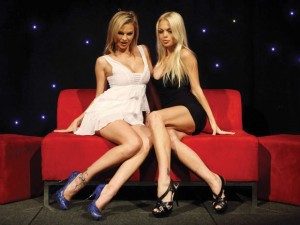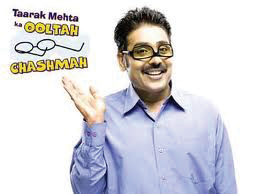Learning from Youtube
Videos uploaded on YouTube can teach you almost anything: from how to make a lip-smacking dinner for your guests to effectively harvesting your field. Pitzer College offers this course based on the belief that the media of learning today has changed. The course studies effects of YouTube videos on culture. Classroom tutorials and assignments have to be uploaded on YouTube and are open to the public. The course is an educational experiment to analyse the strengths and weaknesses of digital media studies.
Stupidity
Taking a course on stupidity seems counter intuitive – after all, we all come across it daily in our lives. This course, offered by the Occidental College, analyses the writing of philosophers such as Friedrich Nietzsche and Gilles Deleuze as well as cartoon characters Beavis and Butthead. We are not sure what the juxtaposition will yield… After all, the course “examines stupidity”. The course description reads, “Stupidity is neither ignorance nor organicity, but rather, a corollary of knowing and an element of normalcy, the double of intelligence rather than its opposite.” We hope the teachers of the course are well versed in the subject in theory rather than practice!
 Cyber Porn and Society
Cyber Porn and Society
No more sneaking around to watch skin flicks or hiding your X-rated magazines from your Mom! A course offered at State University of New York is dedicated to watching and studying porn, obscenity and society’s perception of porn. It helps students aesthetically analyse porn. Parents have apprehensions before enrolling their kids into this course, but most will agree that the course is not at all fluff. The porn curriculum delves into cultural as well as psychological issues related to nudity. Students learn about censorship and the extent to which smut is acceptable. It explains the nature of porn and why it excites humans and enables students to have a better and critical viewpoint about it. Porn is ubiquitous among the youth. Watching it in the classroom instead of watching under the covers at home does offer broader perspectives.
 The Science of Harry Potter
The Science of Harry Potter
Fiction books have made their way to ivory tower studies. At Frostburg State University, physics professor George Plitnik came up with this course after reading a book with the same name. The course applies physics, chemistry, biology and engineering to understand magical happenings in the Potter series. Perhaps anti-gravity research, genetic engineering could explain phenomena such as a flying broomstick and the threeheaded dog, Fluffy. So if Pottermania has infected you, sign up for this course and learn all the scientific anecdotes behind witchcraft and wizardry. Professor Plitnik at times even dresses up as Dumbledore for the lectures. Repello Muggletum, wassay Potter fans?!
 Lady Gaga and the Sociology of Fame
Lady Gaga and the Sociology of Fame
Intrigued by Lady Gaga’s eerie style? Learn about Gaga’s rise to fame at this unique course offered at University of South Carolina. The course professor, Mathieu Deflem, came up with this course partly because he was smitten by Lady Gaga. The course focuses on the sociological dimensions to Gaga’s life, work and stardom. All of 24 years, this dynamic woman has won over 10 million fans on Facebook and a series of music awards within just two years of being in the limelight. This fact called upon Deflam to introduce the Sociology of Fame course on Lady Gaga, earlier known as Stefani Germanotta.
 The Science of Superheroes
The Science of Superheroes
University of California, Irvine is offering this course to arouse interest in science using superheroes as bait. It stands as an exciting benchmark to provoke young minds to think scientifically. Studying the metamorphosis of Bruce Banner into the Incredible Hulk, or how Spiderman swings, or Magneto’s magnet-manipulating power, or how Superman can fly faster than light generate more appeal over anabolic steroids and DNA, or fluid dynamics, or Electromagnetism, or Einstein’s theory of relativity. Professor Michael Dennin is extremely passionate about influencing the youth to understand science as a way of life. This is why he is using the popularity of superheroes to catch in on the attention.
 Daytime Serials: Family and Social Roles
Daytime Serials: Family and Social Roles
A course offered at Wisconsin University, Madison requires students to watch television soaps, analyse them, study their impact and parse their effects on audiences. Offered under the Family and Consumer Communications programme, it examines relationships on TV closely and how personal lives of viewers are affected. An apt course for our moms to enroll into?!
The Vampire in Literature and Cinema
Vampires are mythical creatures, believed to have existed since centuries in various cultures all around the world. Over time, they have morphed from  beings of terror to figures of paranormal fantasy; thanks to the changing faces of fiction stories. Tomislav Longinovic, professor at University of Wisconsin- Madison, studies vampire legends in film, folk tales and literature and how culture has evolved around them. The students will trace origins of the vampire and understand in what circumstances this bloodthirsty creature found place in different cultures. Calling all Twilight fans!
beings of terror to figures of paranormal fantasy; thanks to the changing faces of fiction stories. Tomislav Longinovic, professor at University of Wisconsin- Madison, studies vampire legends in film, folk tales and literature and how culture has evolved around them. The students will trace origins of the vampire and understand in what circumstances this bloodthirsty creature found place in different cultures. Calling all Twilight fans!
Zombies in Popular Media
Zombies hold a significant place in horror fiction. The course deals with cultural and psychological issues revolving around this mythical creature. Why humans liked to watch movies in which one person eats another, or read books of corpses escaping their coffins, is a matter of interest among plenty. Such are the questions Columbia College, Chicago looks to find answers to with this course. It covers video games such as Resident Evil, and zombie movie of all kinds.
The Art of Walking
The Art of Walking is the brainchild of Ken Keffer. Keffer, a philosophy professor at Centre College, Danville has always been mesmerized by Immaneul Kant’s philosophies. The course inspects Kant’s work ‘Critique of Judgement’ and tests his philosophies by taking the students on long walks. He introduced this course as part of the ingenious and unusual courses the University offered in the January term. Walking can be extremely liberating and thought provoking. Keffer takes his students meandering through battlefields, strolling through preserves, feeling moss, hugging trees, walking through cemeteries and swinging from vines to ease them off. It lets go of one’s demeanour and helps unfurl the adventurous and inquisitive side of the person; thereby inspiring philosophical thinking. Closer to nature, graver to thought.
 The Joy of Garbage
The Joy of Garbage
This course is somewhere on the lines of waste management but it also discusses what humans devour and discard. Students trail garbage from its origin to its disposal and treatment. All cultural, financial, governmental, industrial, social, political and sanitary variables are taken into consideration when studying garbage and its decomposition. Sustainable measures to recycle and reuse waste are developed. The exorbitant amounts of waste produced sure need notice and this course does exactly that. All those of you fascinated by the environmental sciences, sign up for a reeking semester.
Wordplay: A Wry Plod From Babel to Scrabble
Joshua Katz’s constrained writing course has had word nerds flocking this course at Princeton University. Constrained writing is a literary form, examples of which are palindromes, lipograms, alliterations, anagrams, onomatopoeias and, more commonly, rhyme and meter. Wry plod, itself, is an anagram for wordplay. The course aims to enrich word power at another level altogether. Boggle and Scrabble fans, this one is for you!
Volume 1 Issue 12





























